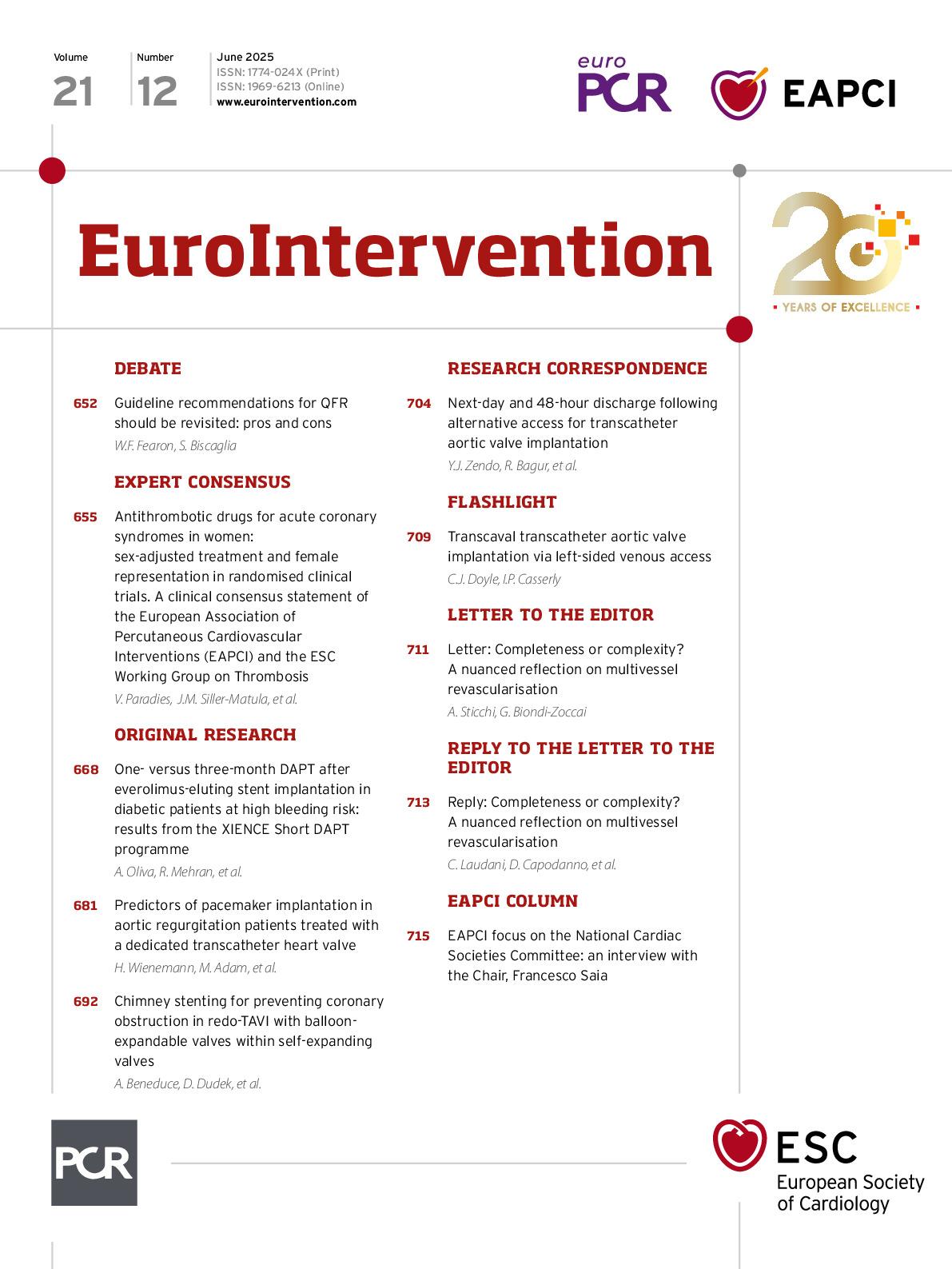We describe a technique to facilitate transcaval (TC) transcatheter aortic valve implantation (TAVI) in a patient with an occluded right common iliac vein. We highlight the feasibility of a left-sided femoral venous approach and the technique employed to overcome the technical challenge encountered in achieving successful transcaval access.
An 86-year-old male with severe symptomatic aortic stenosis and severe peripheral arterial disease presented for elective TC TAVI. Transcaval access was preferred over transaxillary access to minimise the risk of stroke in a patient with significant atherosclerotic disease, given that this access site avoids instrumenting the head and neck vessels. A conventional transcaval approach via right common femoral venous (CFV) access (Figure 1A) was precluded by occlusion of the patient’s right common iliac vein (CIV), presumed secondary to a prior undiagnosed deep vein thrombosis (Figure 1B). An attempt was then made to achieve TC access from the left CFV access site rather than exploring percutaneous revascularisation of the right iliac venous occlusion, as we anticipated this would be a more challenging procedure. However, due to the angulation between the...
Sign up for free!
Join us for free and access thousands of articles from EuroIntervention, as well as presentations, videos, cases from PCRonline.com

